In the United Nations’ Intergovernmental Panel on Climate Change’s recent Sixth Assessment Report, the foremost climate scientists from 65 countries underscored the urgent need for global systems change to mitigate the world’s climate crisis.
To ensure the rapid decarbonisation of our society and the preservation of our besieged natural world, we need a just transition towards planet-positive alternatives to the way that we live and work – particularly in the global North.
There’s already widespread awareness of the individual low-carbon switches that we can all make today – like travelling by bike or train instead of car or plane. But the sustainability of resources that we share with others – like the buildings that we live, consume and work in – often remains overlooked.
Circular construction
The European Union’s Circular Economy Action Plan emphasises the link between decarbonisation and circularity, meaning the reduction, reuse and repurposing of materials. The report notes that the construction sector is responsible for 35% of all waste generated in the EU as well as more than a third of its greenhouse gas emissions.
Wherever you’re reading this right now, look at the built environment around you and consider the materials you see. Were they ethically and sustainably sourced? What did it cost the earth when we extracted and transported them? Are they destined to one day sit in a landfill site while we expend more energy and resources on shiny new replacements?
Greater resource efficiency – building with fewer resources, using more local and sustainable materials, and ensuring longer life cycles of building components – could reduce construction emissions by 80%. The UN, the EU and the German government have therefore all expressed support for a transition towards a more circular construction industry. But there is still no blueprint for how to get there.
Innovation and radical collaboration
At Impact Hub Berlin – we’ve spent years encouraging entrepreneurs and organisations to innovate the way towards a fairer, greener future. So as people returned to their workspaces in the wake of the Covid-19 pandemic (and yes, our membership uptake has shown people need these shared spaces more than ever), we embarked on a new collaboration to embed our work and community in our city’s circular transition.
On the land of the former Kindl brewery in Berlin’s Neukölln district, the building cooperative TRNSFRM had begun the sustainable retrofitting of an old warehouse, renamed as the CRCLR House. Through our shared commitment to radical collaboration, we were over the moon to reach a deal that meant that the CRCLR House would become the new home to Impact Hub Berlin and our 350-strong community of members.
Retrofitting an existing building instead of demolishing it to build a new one is the first step towards creating a circular workspace. It’s been pointed out that many of the current examples of ‘green’ architecture, however sophisticated their carbon reduction systems, rely heavily on the use of virgin materials and energy-intensive components like steel and concrete in their construction processes. Reusing buildings and the materials within them should always be the starting point.
Sustainable and inclusive design
To create a workspace with a drastically reduced carbon and resource footprint, materials such as bricks from the original warehouse were preserved and reused wherever possible. Other components like sinks and toilet cubicles were ‘rescued’ from being sent to landfill by other construction companies. Painstaking hours were spent collecting unwanted doors, windows and stairways from hotels, shopping centres and residential buildings across Berlin and the surrounding area.
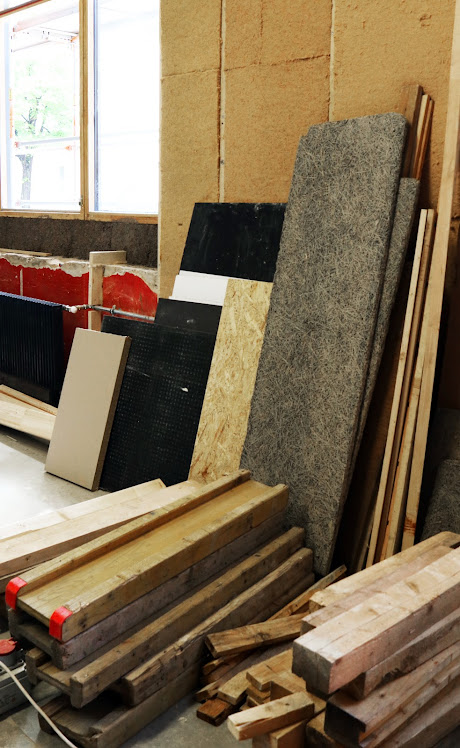
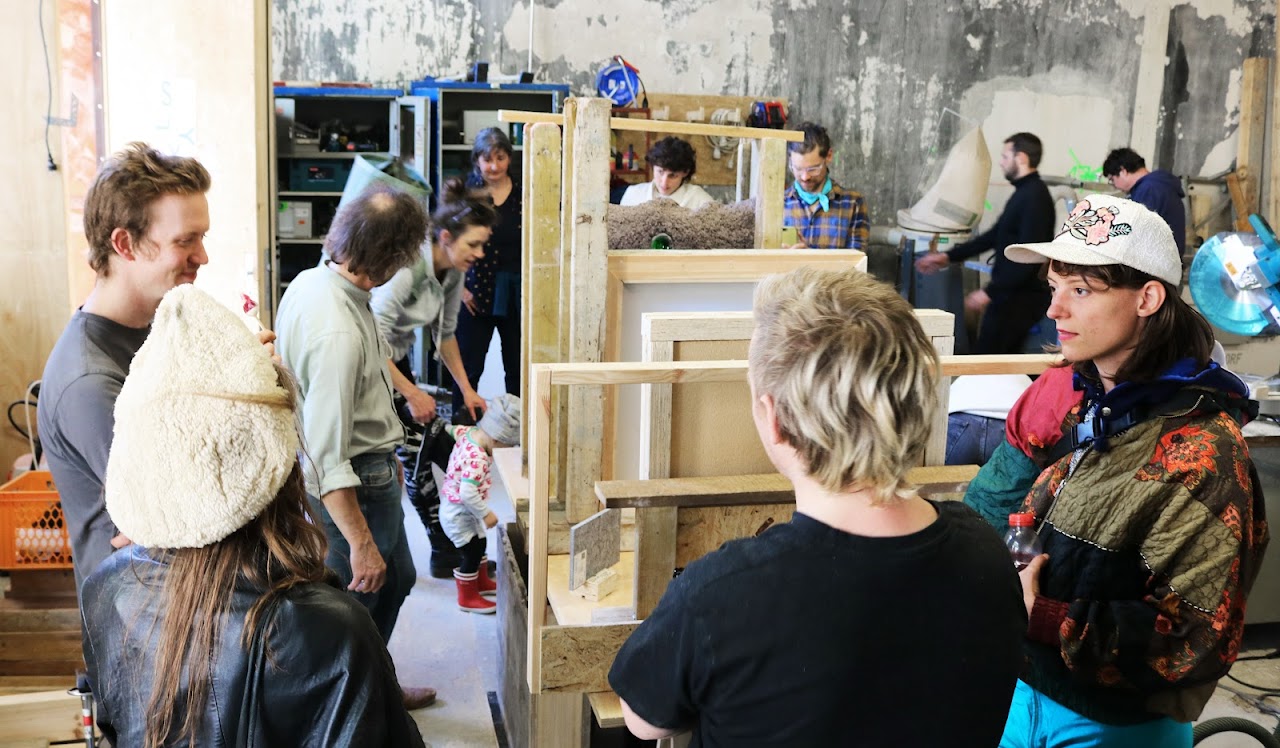
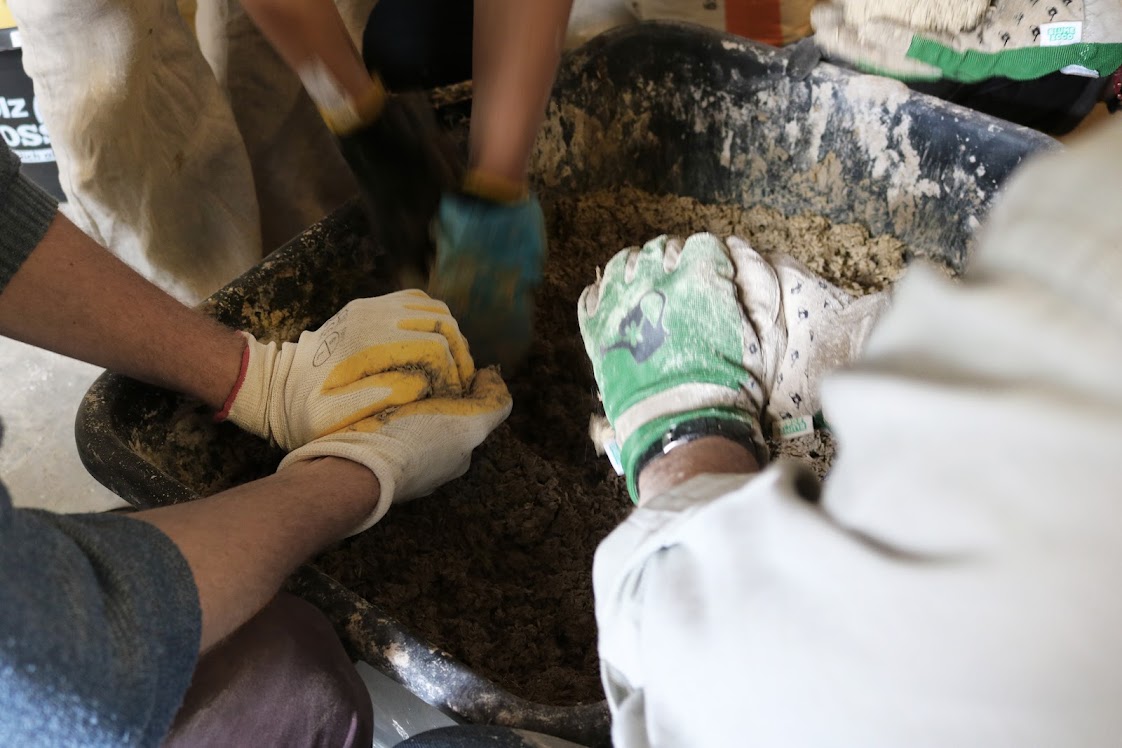
Photo credits: LXSY Architekten
Where new materials were needed, regenerative resources that ‘lock in’ rather than releasing carbon, such as wooden beams, hay bales for insulation, and hempcrete blocks, were the priority. Several of these materials have not just aesthetic but health and wellbeing co-benefits too. Detailed information was stored on how each internal feature was installed, so that materials can be deconstructed and reinstalled elsewhere in future should the building have a change of use. Our awesome interior design partners – LXSY Architekten – held workshops with users and experts to ensure as many diverse opinions as possible were heard when decisions around accessibility and safety were taken.
Even when choosing furnishings, it’s become more possible to find a circular option. We selected NORNORM as a supplier, a company that rents instead of selling furniture. While 3.8 million tons of office furniture go to landfill every year worldwide, NORNORM provides an alternative where users return their rental pieces once they no longer need them, which are then refurbished and rented to the next customer.
From local innovation to a global transformation
There are a few core lessons that the partners working on this project learned, that can be helpful for others looking to implement the circular economy in constructing their workplace:
- Share the process. So many fantastic partner organisations and individuals have been involved in this project from the very beginning. Creating an experiment like this means bringing in a whole range of voices. The Design Thinking staple of bringing in your users (members in our case) at the start of the process to shape the vision with you, holds true.
- Using reused materials can still require more time (and money) than you think. On the plus side, many components for the building were readily available from the existing construction and our former space. Rescuing materials from other sites also meant that not as many new parts needed buying, but both collecting them and working out the jigsaw puzzle of how to fit them all into the design incurred greater labour costs.
- 100% circular doesn’t exist (yet). There are some building materials that, often due to legal, health and safety regulations, have to be new and not reused. Don’t get bogged down trying to find a circular solution for every last nut and bolt – better to focus on making sure any new materials you have to use can be disassembled and reused in future.
The experience of collaborating on a circular construction project of this scale shows a glimpse of what can happen through radical collaboration, diverse partnerships and a commitment to designing things differently. The next challenge in our building’s story is how to further reduce its operational footprint – honing our energy efficiency and waste reduction measures.

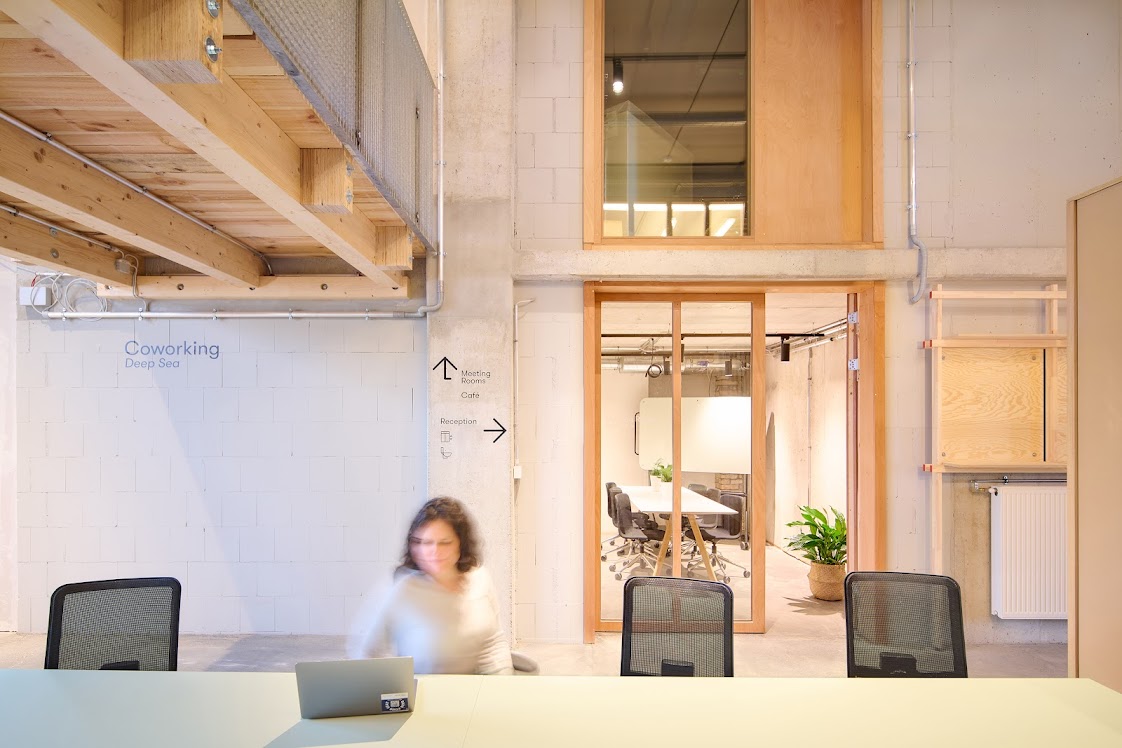
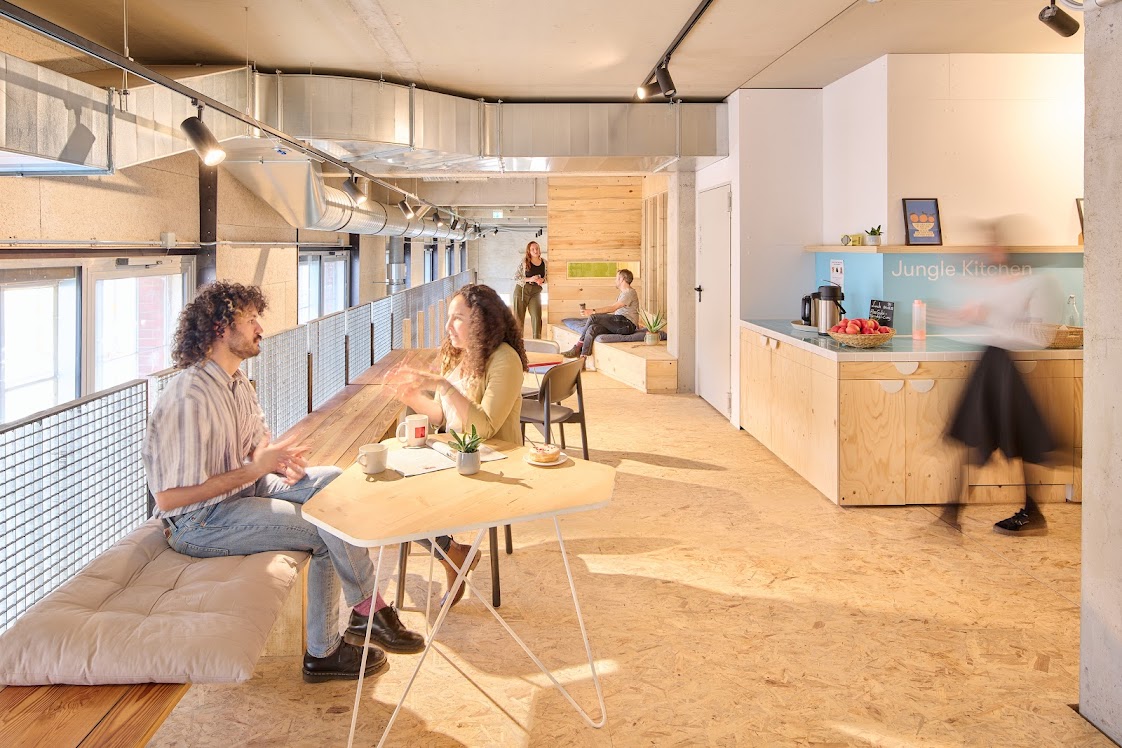
Photo Credits: Michael Berger
The Impact Hub network, made up of over 100 spaces worldwide, has launched a plan to make our buildings even more sustainable. But we need all workspace providers across the globe to match this commitment in order to rapidly decrease the business world’s greenhouse gas emissions. For this year’s Earth Month, you can make a start by asking your employer the question: “how sustainable is our office?”
This guest article was written by Luke Davis, Communications Lead at Impact Hub Berlin. Cover photo by Michael Berger.










